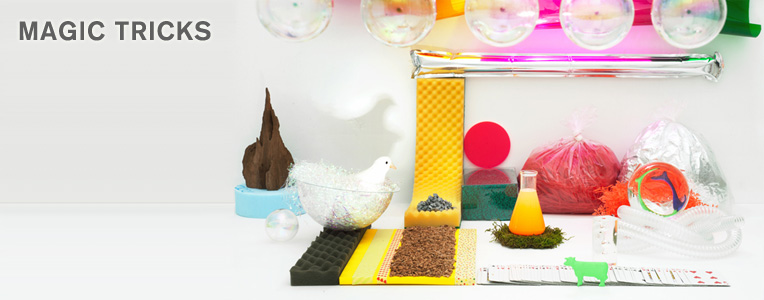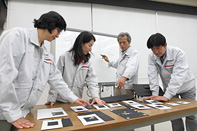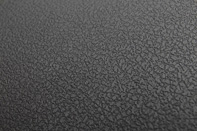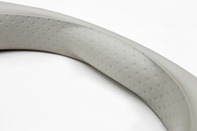Magic Tricks

Seeing, or feeling, is not believing when it comes to Nissan's car materials. A magician can make his beautiful assistant float in the air before the very eyes of an audience. Yes, it's only an illusion. But even Nissan has specialist sensory evaluators who, just like magicians, conjure up extraordinary illusions. Inside a Nissan car you will find new materials developed with an exhaustive scientific understanding of people and utilizing the power of, well, illusion. You might just start to doubt your senses.
Take a silk shirt or polyester one: Which is nicer to touch? Which feels expensive? Most people would answer silk, of course. However, we can't make every shirt out of silk. Instead we have to make it so that the polyester gives off the sensation of silk. And, just as in fashion, sensory comfort is also extremely important for automobiles.
See, touch, use: In this chain of actions humans will always look to judge if something feels good. To solve how this mystery works we must first be scientific.

For making precise judgments on customer comfort Nissan's specialist sensory evaluators have supersensitive sensors literally at their fingertips.
Let's start with "seeing": Car interiors mostly use plastic. Many people frown upon plastic, with its characteristically shiny reflection of light. We even say something is "plasticky" to describe a material that looks cheap. But the fact is, due to issues of shape and space, there are simply parts of a car where we cannot use a more superior material like leather. So, can we do something to reduce the reflected light and give even plastic a texture as good as leather?
From this idea Nissan's engineering created "micro-grain". By specially coating the resin surface the reflected light is diffused in different directions, thus rendering an impression of quality.

The "touching" part is also complex. The human finger is a high-precision sensor; it can feel even a single hair just 50 microns in size. But this sensor is not foolproof.
If you can understand how human fingers judge which part is hard or soft, then you can make even the hardest plastic feel soft. Using this science Nissan developed the "soft-feel grain surface", a series of tiny bumps that increase the area in contact with our fingertips, thus registering it as soft and moist. Even without using costly fabrics the materials still successfully appeal to our senses.
Nissan's elite sensory evaluators work to develop micro-grain and soft-feel grain surface in the vehicle interior, looking, touching and using things from the perspective of a driver or passenger. One of them, Akane Ban, has now performed her rigorous assessments 12,000 times over 6 years. Just like a magician she considers how can she create an illusion, and finally tests out whether the trick is detected in practice.
Nissan quantifies this feeling of comfort, and over and over repeats a cycle of inspection, measurement, analysis and design. Not only in Japan, Nissan's team perseveres so that every one of its global bases will always be able to manufacture fully satisfactory products.
Think you can tell for which vehicle parts Nissan has "magically" enhanced tactile quality? Go on, we challenge you to take yourself to a Nissan showroom and check them out with your own eyes (and hands). You probably won't see through the tricks - but we reckon you'll think it still feels pretty good anyway.

Micro-grain is used for the Nissan March's speed meter hood and soft-feel grain for the assist grips.

